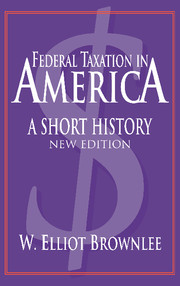Introduction: Taxation and national emergencies
Published online by Cambridge University Press: 18 August 2009
Summary
Since the late 1970s, radical reform of the federal tax system has been a matter of serious discussion. And that discussion has prompted important changes in the tax system. Of particular note were the reforms that President Ronald Reagan engineered. These amounted to the most significant changes in federal tax policy in peacetime since the New Deal of President Franklin Roosevelt. The so-called Reagan Revolution, however, did not abandon the income tax that had been crafted during World War II. Indeed, the Reagan administration actually increased the capacity of the income tax for raising revenue. But in the 1990s, other powerful conservatives, led by Newt Gingrich and the congressional architects of the “Contract with America,” began calling for eradicating the income tax and replacing it with either a national tax on consumption or a “flat tax.” In 2002, president George W. Bush joined those voices by proposing a broad tax on consumption that would take the place of the progressive income tax. In 2003, in response, Congress enacted tax cuts that may have initiated the shift of federal finance toward a system of consumption taxation.
As part I of this book suggests, there would be nothing extraordinary about the emergence of a new tax regime—that is to say, a system of taxation with its own characteristic tax base, rate structure, administrative apparatus, and social purpose. The United States has had five such regimes since the founding of the republic.
- Type
- Chapter
- Information
- Federal Taxation in AmericaA Short History, pp. 1 - 10Publisher: Cambridge University PressPrint publication year: 2004



